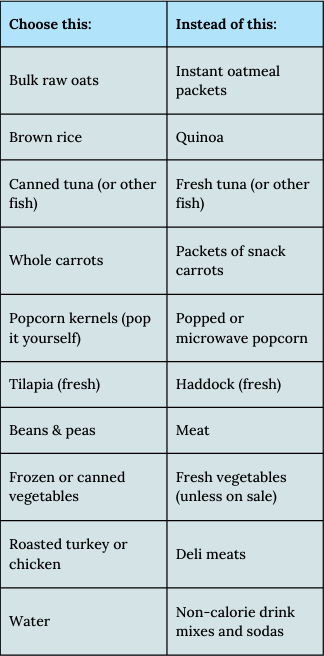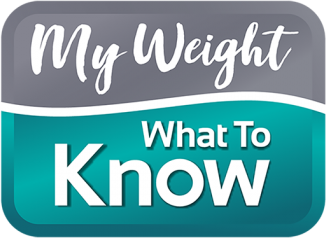By Melinda Maryniuk, MEd, RD, CDCES
Healthy eating can feel expensive, but it doesn’t have to be. It may require a little more planning and effort – but you’ll be eating better, feeling better, and saving money! Here are our best tips:
Planning Ahead:
- Shop in your refrigerator first. Avoid food waste and plan to use what you have.
- Read the store circular to check sale items.
- Build menus around the fish, meat, fruit and veggies that are on sale.
- Make a list, and base it on the meal menu you plan for your week.
- Bring coupons; get a raincheck if what you want is sold-out.
- Plan a few meatless meals each week.
- Eating at home (bringing snacks and meals to work) will almost always be less expensive than eating out.
In The Store:
- Stick to your list. Avoid impulse purchases as much as you can.
- Check the expiration dates. Grab milk or other items that expire from the back of the shelf.
- Compare prices; the house brand may not always be less than a brand that is on sale.
- As much as you can, stick to the outside perimeter of the store. That’s where you’ll find your fresh fruits, veggies, meats, fish and dairy.
To save some extra money:

Some more tips:
- If you like carbonated beverages, consider investing in a sparkling beverage maker such as SodaStream. Add natural flavors such as lemon or lime or a splash of fruit juice.
- While buying snack packs (crackers, pretzels, carrots) can be convenient, you can save a lot of money by making your own. Keep small snack bags handy to make-your-own snack packs.
- Store “specials” can often involve buying a large quantity of something. If you end up with several pounds of chicken or salmon, make sure you have freezer bags or wrap to quickly portion it into what you can use for several meals.
- Using meatless protein sources including beans, peas, tofu, and peanut butter will save you money.
- Make a habit of checking the “day old” shelves in the bread and produce sections. Depending on what you’re making, the choices available might be just what you need!
To find a physician near you who specializes in weight management, click here.
Get a weekly text to help you stay on track with your health goals! Click here to sign up.
This article was sponsored by Novo Nordisk Canada. All content is created independently by My Weight – What To Know with no influence from Novo Nordisk.

